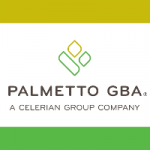 EndoGastric Solutions® Provides Access to the TIF 2.0 procedure through Medicare Administrative Contractor Palmetto GBA
EndoGastric Solutions® Provides Access to the TIF 2.0 procedure through Medicare Administrative Contractor Palmetto GBA
REDMOND, Washington – EndoGastric Solutions® (EGS), a leader in incisionless procedural therapy for gastroesophageal reflux disease (GERD), is pleased to announce that Medicare Administrative contractor Palmetto GBA, LLC has approved reimbursement of the company’s Transoral Incisionless Fundoplication (TIF®) 2.0 procedure for Medicare patients across the Carolinas, Virginia and West Virginia. Palmetto GBA, based in Columbia, South Carolina, is one of the nation’s largest providers of high volume claims and transaction processing, contact center operations and technical services to the federal government and other commercial customers. This decision will affect approximately 4.4 million Medicare patients across the region.
“Patients suffering from chronic GERD need a third option other than medications, which mask the symptoms of the condition, and traditional surgery with its known side effects,” says Karim Trad, MD, Clinical Professor of Surgery at George Washington University School of Medicine and principal investigator in the TIF 2.0 clinical study. He further explains how the TIF 2.0 procedure works, “Utilizing the EsophyX® device, a tool designed to rebuild the antireflux valve and restore the body’s natural protection against acid reflux, the TIF 2.0 procedure offers patients durable relief from GERD symptoms.”
“Approximately one in four Americans suffer from GERD, and the TIF 2.0 procedure has already helped more than 18,000 patients worldwide treat their chronic GERD,” says Skip Baldino, CEO, EndoGastric Solutions. “We are grateful for partners like Palmetto, who are helping us address an unmet clinical need by making the TIF 2.0 procedure more accessible for Medicare patients.”
The TIF 2.0 procedure was made available with Palmetto on November 28, 2016, and patients and providers can reference Category 1 CPT® code 43210 for coverage opportunities. For more information on the TIF 2.0 procedure, please visit https://www.endogastricsolutions.com/tif-procedure/.
The positive coverage decision follows publication of three-year follow up data from TIF EsophyX vs Medical PPI Open Label (TEMPO), a prospective, randomized, multicenter clinical study, which demonstrated long-term control of chronic GERD after a TIF 2.0 procedure with the EsophyX® device. The study met its primary endpoint, with 83 percent of patients undergoing the TIF procedure experiencing elimination of regurgitation and all atypical GERD symptoms at three-years post-procedure. The Surgical Endoscopy open access paper is available here. The TIF 2.0 procedure has also been supported by over 70 additional published studies that consistently report positive clinical outcomes.
Additional Medicare Administrator Contractors with confirmed coverage for the TIF procedure include: Cahaba Government Benefit Administrators,® LLC for over three million members in Alabama, Georgia and Tennessee, CGS Administrators®, LLC which serves 2.7 million members in Kentucky and Ohio, and Novitas Solutions, Inc. which covers over nine million members in Arkansas, Colorado, Louisiana, Mississippi, New Mexico and Oklahoma.
Earlier this year, Health Care Service Corporation (HCSC) provided coverage for approximately 15 million members through its affiliates; Blue Cross Blue Shield of Illinois, Blue Cross Blue Shield of Montana, Blue Cross Blue Shield of New Mexico, Blue Cross Blue Shield of Oklahoma and Blue Cross Blue Shield of Texas.
About Current Procedural Terminology (CPT®)
CPT codes are a listing of descriptive terms and identifying codes for reporting medical services and procedures. The purpose of CPT is to provide a uniform language that accurately describes medical, surgical, and diagnostic services, and thereby serves as an effective means for reliable nationwide communication among physicians and other healthcare providers, patients and third parties. CPT is registered trademark of the American Medical Association.
The Federal Register has posted coding and payment information specific to the CPT code, allowing patients to more easily receive access to treatment for GERD. Physicians and hospitals can reference CPT Code 43210 EGD esophagogastric fundoplasty and APC 5331 Complex GI Procedures for TIF® procedures.
NP02450-14A/-01D

